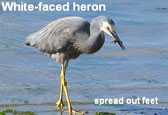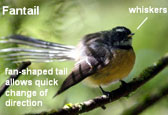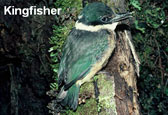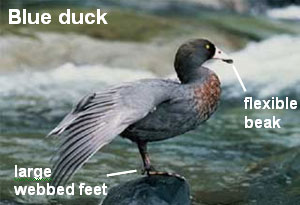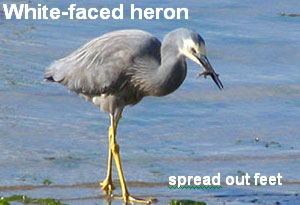|
Cards about beaks |
-
long beak for probing
-
nostrils at the end of beak for smelling food
|
-
long beak for spearing prey
|
-
pointy beak for pearing prey
|
-
strong beak for opening cones to get seeds, digging for grubs in rotten wood
-
brush tongue for getting nectar from flowers
|
-
"whiskers" above beak for sensing flying insects
|
-
scoop shaped beak for scooping up food in water
-
flexible beak for digging under stones
|
|
Cards about feet |
-
long toes for holding food and hanging from branches
|
-
perching feet for sitting on tree branches
|
-
perching feet for sitting up high and watching for prey
|
-
large webbed feet for swimming
|
-
strong legs for walking on forest floor
|
-
spread out feet for walking in soft sand
-
long legs for wading in water
|
|
Cards about food |
-
nectar, seeds, and fruit of native trees, grubs in rotten wood, honeydew on beech trees
|
-
freshwater insects and freshwater snail in fast-flowing rivers
|
-
flying insects in bush areas
|
-
fish, small mammals and birds, insects
|
-
fish, frogs, tadpoles, insects and spiders
|
-
worms and insects found in the soil and leaf litter
|



